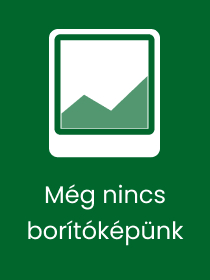
On-Screen Language in Video Games
A Translation Perspective
Sorozatcím: Elements in Translation and Interpreting;
-
20% KEDVEZMÉNY?
- A kedvezmény csak az 'Értesítés a kedvenc témákról' hírlevelünk címzettjeinek rendeléseire érvényes.
- Kiadói listaár GBP 18.00
-
8 599 Ft (8 190 Ft + 5% áfa)
Az ár azért becsült, mert a rendelés pillanatában nem lehet pontosan tudni, hogy a beérkezéskor milyen lesz a forint árfolyama az adott termék eredeti devizájához képest. Ha a forint romlana, kissé többet, ha javulna, kissé kevesebbet kell majd fizetnie.
- Kedvezmény(ek) 20% (cc. 1 720 Ft off)
- Kedvezményes ár 6 880 Ft (6 552 Ft + 5% áfa)
Iratkozzon fel most és részesüljön kedvezőbb árainkból!
Feliratkozom
8 599 Ft

Beszerezhetőség
Becsült beszerzési idő: A Prosperónál jelenleg nincsen raktáron, de a kiadónál igen. Beszerzés kb. 3-5 hét..
A Prosperónál jelenleg nincsen raktáron.
Why don't you give exact delivery time?
A beszerzés időigényét az eddigi tapasztalatokra alapozva adjuk meg. Azért becsült, mert a terméket külföldről hozzuk be, így a kiadó kiszolgálásának pillanatnyi gyorsaságától is függ. A megadottnál gyorsabb és lassabb szállítás is elképzelhető, de mindent megteszünk, hogy Ön a lehető leghamarabb jusson hozzá a termékhez.
A termék adatai:
- Kiadó Cambridge University Press
- Megjelenés dátuma 2022. november 24.
- ISBN 9781009045513
- Kötéstípus Puhakötés
- Terjedelem104 oldal
- Méret 228x152x7 mm
- Súly 170 g
- Nyelv angol 406
Kategóriák
Rövid leírás:
The Element uncovers the sources of interlingual and cross-cultural asymmetries motivated by on-screen language in video games.
TöbbHosszú leírás:
In this Element, the authors focus on the translational dimension of 'on-screen language' (OSL). They analyse a data set covering the Polish localisations of Tom Clancy's The Division 2 and Shadow Warrior 2, from which over 1000 cases of unique and meaningful OSL were extracted, almost exclusively in languages other than Polish. Close to 100 representative examples are examined in this Element to map out a comprehensive typological account of OSL. First, visual-verbal stimuli are categorised by their prominence in the 3D environment. The second typology focuses on the identified OSL functions. A supplementary typological distinction is proposed based on the technical (static vs. dynamic) implementation of OSL. The discussion of findings and implications notably comprises input from an interview that the authors conduced with a lead level developer behind Shadow Warrior 2 to provide a complementary professional perspective on OSL and its translation.
TöbbTartalomjegyzék:
Introduction; Video games: the potential for on-screen language and translation; 1. On-screen language - from films to video games; 2. Video games as a medium and more than that; 3. Localisation; Mapping out OSL functions and facets; 4. Procedure and scope of analysis; 5. Attention allocation continuum; 6. Immersion-enhancing facets of OSL in games; 7. Multiple levels of communication in OSL; 8. Practical considerations in OSL deployment; Meaningful mismatches: findings and future developments; 9. Discussion; Appendix; Bibliography.
Több












